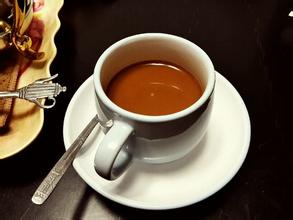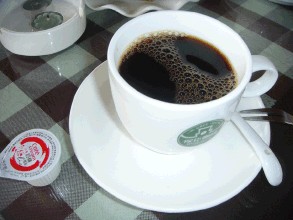Burundian Coffee Flavor and taste introduction to boutique coffee beans in manor area
Londi Coffee bears a striking resemblance to neighboring Rwanda, where coffee from the two countries is often confused. Burundian coffee is mainly grown in bourbon, with traditional wet processing of coffee cherries. Its boutique coffee is characterized by elegant sweetness and bright citrus aromas.
Burundi is a small landlocked country located at the junction of eastern and central Africa, across the Nile and Congo basins, dominated by hills and mountains, with excellent coffee-growing elevations. The history of coffee cultivation in Burundi is not long, its coffee planting industry is carried out entirely in the form of small family farms, there is a great difference in quality, and years of war and social unrest have made its coffee planting industry very chaotic. But I have to admit that it has the potential to produce high-quality coffee.
Burundi Buyendi AA,FWS Burundi is a very interesting country for us. Little is known about coffee, and coffee producers and processors cannot price their coffee, just as people cannot identify uncarved jade, so people here do not have the income to do the same planting and processing methods that are being used in other countries. Like Panama. " So says Tim Maestas (USA) of Augies Coffee.
A8B6.tm.png
↑
The heavily colored soil of Burundi.
Picture from: LMCP
1 treatment
Burundian coffee was first brought in by the Germans in the 1900s; they found that bourbon was the most suitable for growing in the local climate, which is usually a "tropical" plateau climate with a very large temperature difference between day and night. However, due to the suspension of investment in coffee research, bourbon has become the only coffee variety left in the country and has been treated with "full washing".
The development of boutique coffee needs continuous breakthrough and innovation. In 2014, Long Miles Coffee Project (LMCP) began to use sun treatment and honey treatment for their coffee, which made professional coffee cup testers overjoyed at the taste of the coffee. According to Miss Gu Qinru, head of Latorre & Dutch Coffee Asia, "usually we can drink citrus and plum flavors in washed Burundian coffee. And this is our first cup of Burundian coffee treated with sun and honey. Its flavor turns into more complex strawberries, grapes and tropical fruits. It seems that the way it is handled is crucial to the taste of the coffee. "
3D10.tm.png
↑
The selection and treatment of coffee fruits have a great influence on the quality of raw beans. The picture shows Long Miles's Bukeye processing plant.
Picture from: LMCP
2 traceability
Traceability is a common problem faced by coffee growers, raw bean buyers and coffee roasters. There are currently about 3500 families working for LMCP. Production harvesting areas are distributed on eight different hilltops and two processing plants-Bukeye (operational in 2013) and Heza (operational in 2014). There are many variables that affect the quality of the final beans. For example, each mountain has a different microclimate, which in turn affects the growth, picking and handling of coffee fruits, and varies from day to day. Nathan James Johnston, the boss of Cartel Coffee Roasters in Australia, said: "working with Long Miles, we can know exactly where, when and who picked the coffee, which means a lot to us."

Important Notice :
前街咖啡 FrontStreet Coffee has moved to new addredd:
FrontStreet Coffee Address: 315,Donghua East Road,GuangZhou
Tel:020 38364473
- Prev

Puerto Rico boutique coffee bean flavor taste manor variety brand introduction
On 6 November 2012, Puerto Rico held its fourth referendum. The referendum consists of two rounds of voting. In the first round, Puerto Ricans voted on whether they wanted to change the status quo in their relations with the United States. 1.8 million people were eligible to vote, 65000 gave up the first round of voting, and 54 per cent of those who took part in the vote supported a change of relationship. Later, Puerto Ricans were like
- Next

Guatemala Antigua coffee varieties producing area flavor taste characteristics
United Fruit owns its largest estate in Guatemala, and it also owns Central Guatemala's Guatemala Inter-American Railway Company and Guatemala's only seaport. Driven by the United Fruit Company, the U.S. Foreign Office began a propaganda war against Guatemala, attacking the Árbenz regime in the name of anti-communism. CIA allies with opposition groups in Guatemala's military
Related
- Detailed explanation of Jadeite planting Land in Panamanian Jadeite Manor introduction to the grading system of Jadeite competitive bidding, Red bid, Green bid and Rose Summer
- Story of Coffee planting in Brenka region of Costa Rica Stonehenge Manor anaerobic heavy honey treatment of flavor mouth
- What's on the barrel of Blue Mountain Coffee beans?
- Can American coffee also pull flowers? How to use hot American style to pull out a good-looking pattern?
- Can you make a cold extract with coffee beans? What is the right proportion for cold-extracted coffee formula?
- Indonesian PWN Gold Mandrine Coffee Origin Features Flavor How to Chong? Mandolin coffee is American.
- A brief introduction to the flavor characteristics of Brazilian yellow bourbon coffee beans
- What is the effect of different water quality on the flavor of cold-extracted coffee? What kind of water is best for brewing coffee?
- Why do you think of Rose Summer whenever you mention Panamanian coffee?
- Introduction to the characteristics of authentic blue mountain coffee bean producing areas? What is the CIB Coffee Authority in Jamaica?

